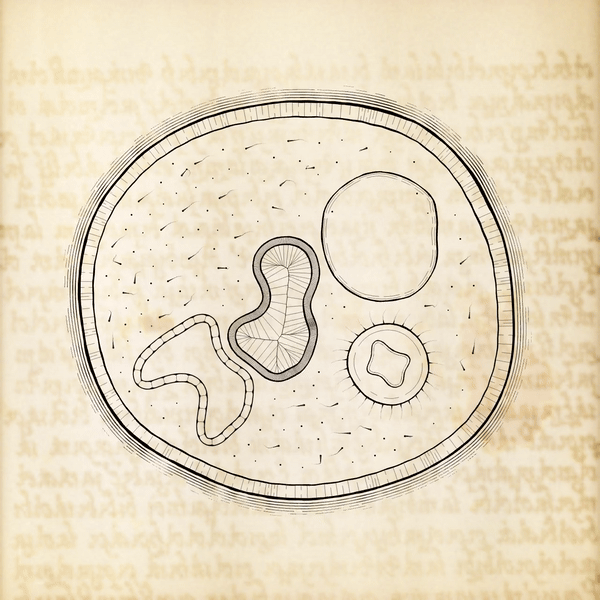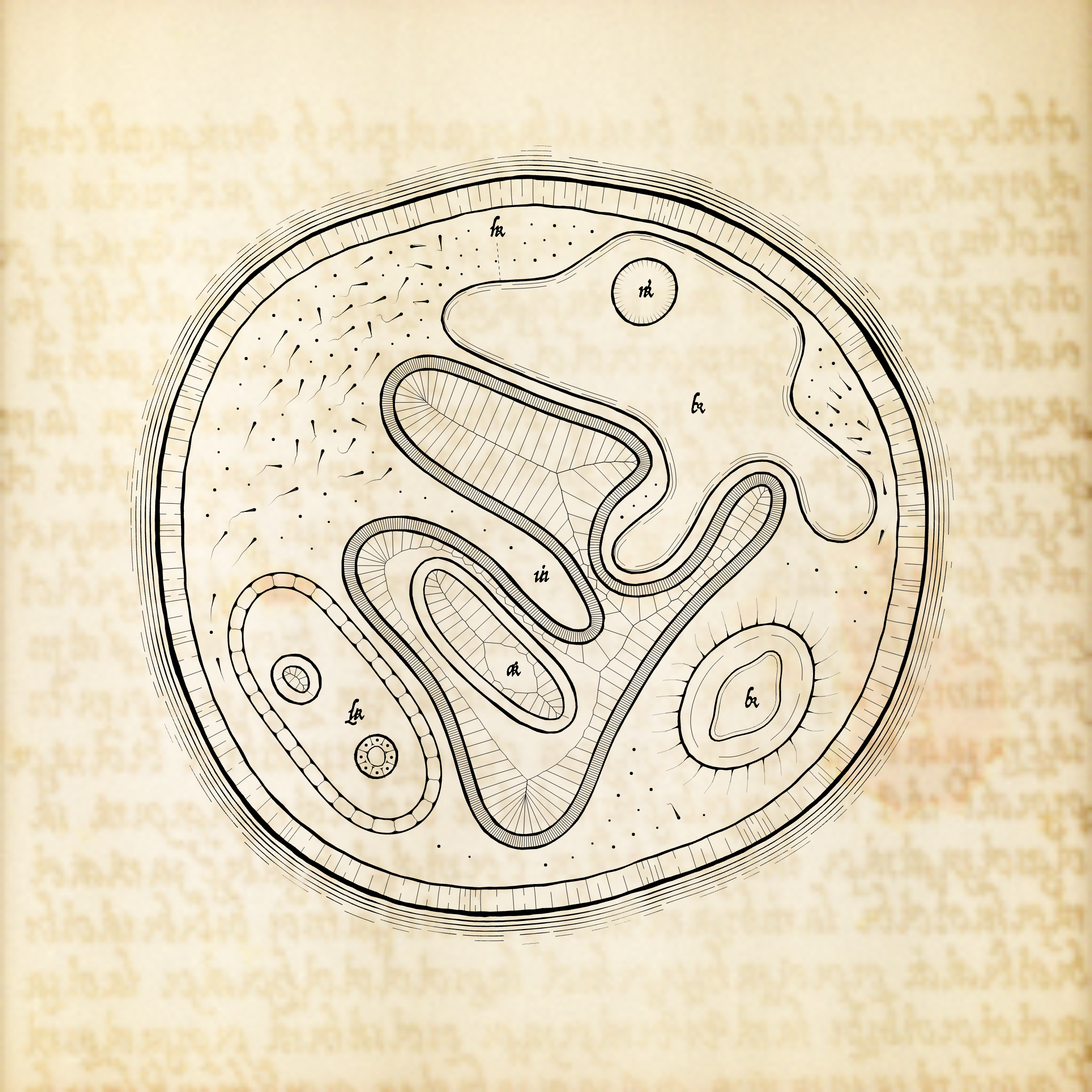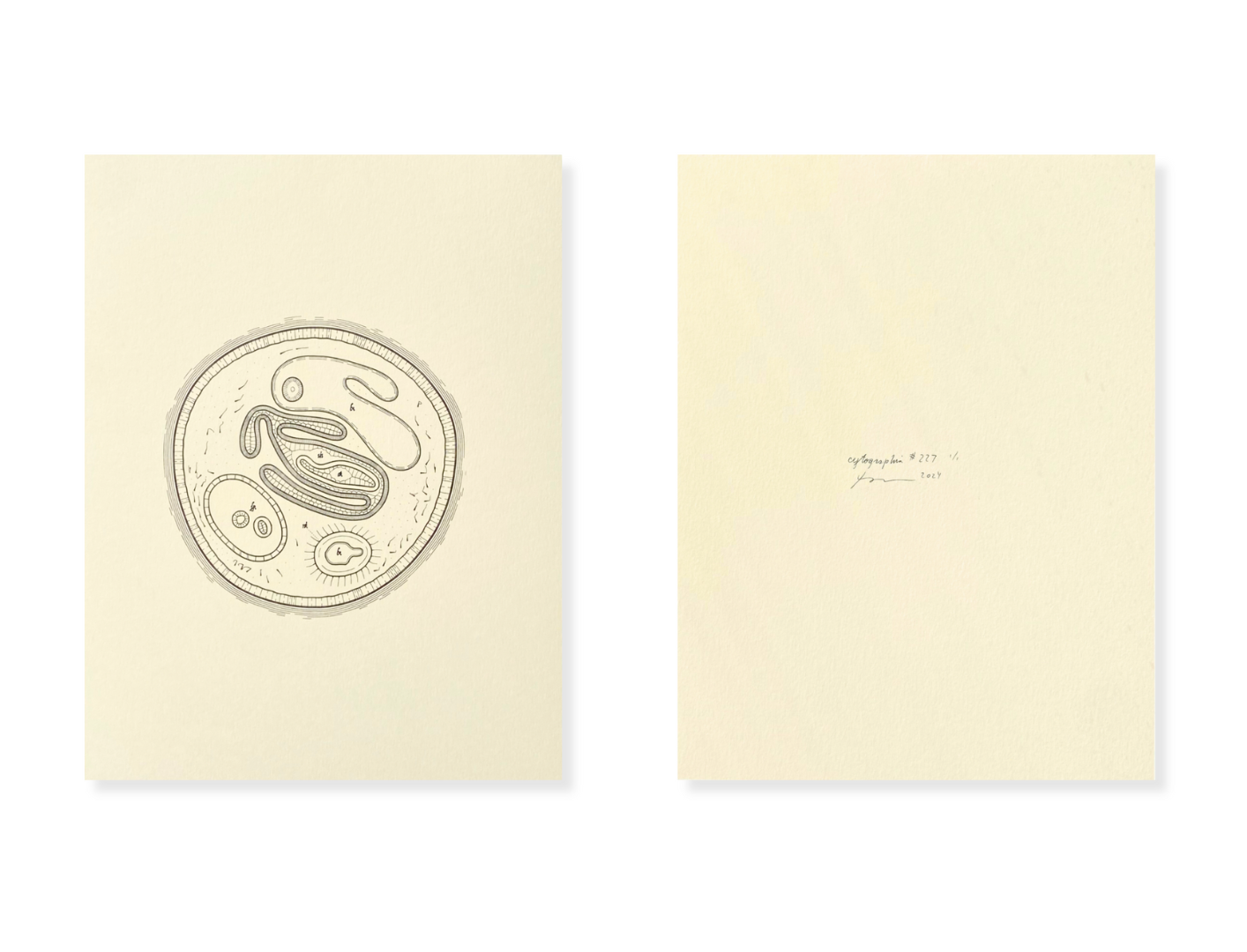- Play video
Cytographia #227, 2024
HP7475A pen-plot in black 0.25mm Pilot Hi-Tec-C Gel Ink on cream-coloured, acid-free Canson Colorline 300gsm card accompanied by generative, real-time graphic, ERC-721 token certified by Verisart
8 x 10.5 inches
About The Artwork
Cytographia is an elegy for species we will never know, or will never know again, expressed through generative illustrations from an imaginary book about imaginary organisms. The artwork depicts speculative cell structures whose appearances and movements arise emergently and in response to real-time user interactions. Cytographia was created using p5.js (an open-source programming toolkit for the arts) and may run best in the Chrome browser on OSX.
An algorithmic "neoincunabulum of xenocytology", Cytographia presents an interactive diagram of a one-celled microorganism, styled to evoke a hand-drawn engraving. Every aspect of this illustration is generated through custom code, including the simulated behavior of the depicted creature, the poiesis of its anatomy, the calligraphic quality of its lines, the asemic letterforms of its labels, and the virtual "paper" on which it is rendered. Cytographia's drawings may be exported as high-resolution PNG images, or in an SVG vector format suitable for pen-plotting on A4 paper.
The Cytographia project draws inspiration from several historically significant books that visually and methodically documented encounters with the unknown. These include Robert Hooke's Micrographia (1665), a landmark of scientific observation in which living cells were described for the first time; Edmund Fry's Pantographia (1799), an attempt to compile exemplars of all the world's writing systems; Ernst Haeckel's Kunstformen der Natur (1899), a rich exploration of symmetry and structural hierarchy in natural forms; and Luigi Serafini's hallucinatory Codex Seraphinianus (1981), a visual encyclopedia of an artist's imagined world. The generative letterforms in Cytographia are loosely based on 16th-century typefaces by Ludovico degli Arrighi.
Cytographia represents a culmination of several enduring threads in Golan Levin's thirty-year oeuvre of interactive software art, including research into responsive blobs (e.g. Polygona Nervosa, 1997); artificial life (e.g. Obzok, 2001); the use of physics simulations in computational drawing (e.g. Floccus, 1999) and the algorithmic generation of asemic writing systems (e.g. Alphabet Synthesis Machine, 2002).
Cytographia requires a modern browser with WebGL and hardware acceleration enabled. The recommended configuration for Cytographia is the Chrome browser on MacOS, in which the artwork is known to produce consistent and replicable results. The project responds to both mouse/touch and keyboard interactions. An index of Cytographia's key commands can be displayed by pressing h (for "help"). These key commands provide access to functionality including file export; toggles that enable or disable various graphical options, potentially improving performance on some systems; and access to a playful "sandbox" mode, in which a collector or visitor can assemble the organelles of their own imaginary lifeform.
About Golan Levin
Golan Levin (b.1972) is a Pittsburgh-based artist and educator, active in software art since 1995. His work explores intersections of machine code, visual culture, and critical making to highlight our relationship with machines and expand human creativity. Levin’s art is in the permanent collections of the Museum of Modern Art, Tate London, ZKM Karlsruhe, and the Cooper-Hewitt Smithsonian Design Museum, and has been exhibited at venues like the Whitney Biennial, Victoria and Albert Museum, Ars Electronica, and ICA London. He holds degrees from MIT and has been a Professor of electronic art at Carnegie Mellon University since 2004. With Tega Brain, he co-authored Code as Creative Medium (MIT Press, 2021), a guide for creative coding educators.









